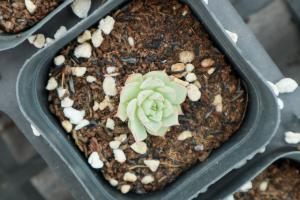Can You Plant a Tree in an Easement?
Planting trees is an excellent way to enhance the natural beauty of a neighborhood, put down roots, and leave a lasting legacy for generations to come. However, planting a tree can be tricky if your property lies in an easement. An easement is a legal right that allows someone else to use your land for a specific purpose. Before planting a tree in an easement, it's essential to understand the legal implications and any potential roadblocks that may arise.
What is an Easement?
An easement is a legal agreement that grants the right to use someone else's property for a specific purpose. The most common types of easements are those that allow utility companies to install and maintain power lines or access water pipes. The easement holder does not have the right to possess or use the land in any other way, and their use of the land is usually restricted to a specific area.
Who Owns an Easement?
Even though someone else has the right to use your property, the easement holder does not own it. The property owner still has the right to enjoy and use the land in a way that does not interfere with the easement holder's right to use it. This means that the property owner can still garden, install a pool, or build a shed, even if there is an easement on the property.
Can You Plant a Tree in an Easement?
Whether you can plant a tree in an easement depends on the specific terms of the easement agreement. Some easements contain restrictions on planting trees or other landscaping activities, while others do not. When you buy a property, the easement agreements should be included in the title search, and you should read them carefully to determine what the agreement allows.
What Happens if You Plant a Tree in an Easement?
If you plant a tree in an easement area without permission, you could be in violation of the agreement. The easement holder could require you to remove the tree, or they may remove it themselves, and you could be responsible for any damages or costs associated with the removal. Depending on the severity of the violation, you could also face fines or other penalties.
How to Plant a Tree in an Easement?
If you want to plant a tree in an easement, the first step is to review the easement agreement carefully. If there are no restrictions on planting trees, you should notify the easement holder of your plans and ensure that the tree will not interfere with any of their rights. It's also essential to make sure that the tree will not create any safety hazards for nearby power lines or other utilities.
Conclusion
Planting a tree is a great way to enhance the beauty of your neighborhood while leaving a lasting legacy for future generations. However, if your property lies in an easement, it's important to understand the legal implications of planting a tree. By reviewing the easement agreement and notifying the easement holder of your plans, you can ensure that you are not violating any rules and increase your chances of growing a healthy and beautiful tree.

 how many times do yo...
how many times do yo... how many planted tre...
how many planted tre... how many pine trees ...
how many pine trees ... how many pecan trees...
how many pecan trees... how many plants comp...
how many plants comp... how many plants can ...
how many plants can ... how many plants and ...
how many plants and ... how many pepper plan...
how many pepper plan...































